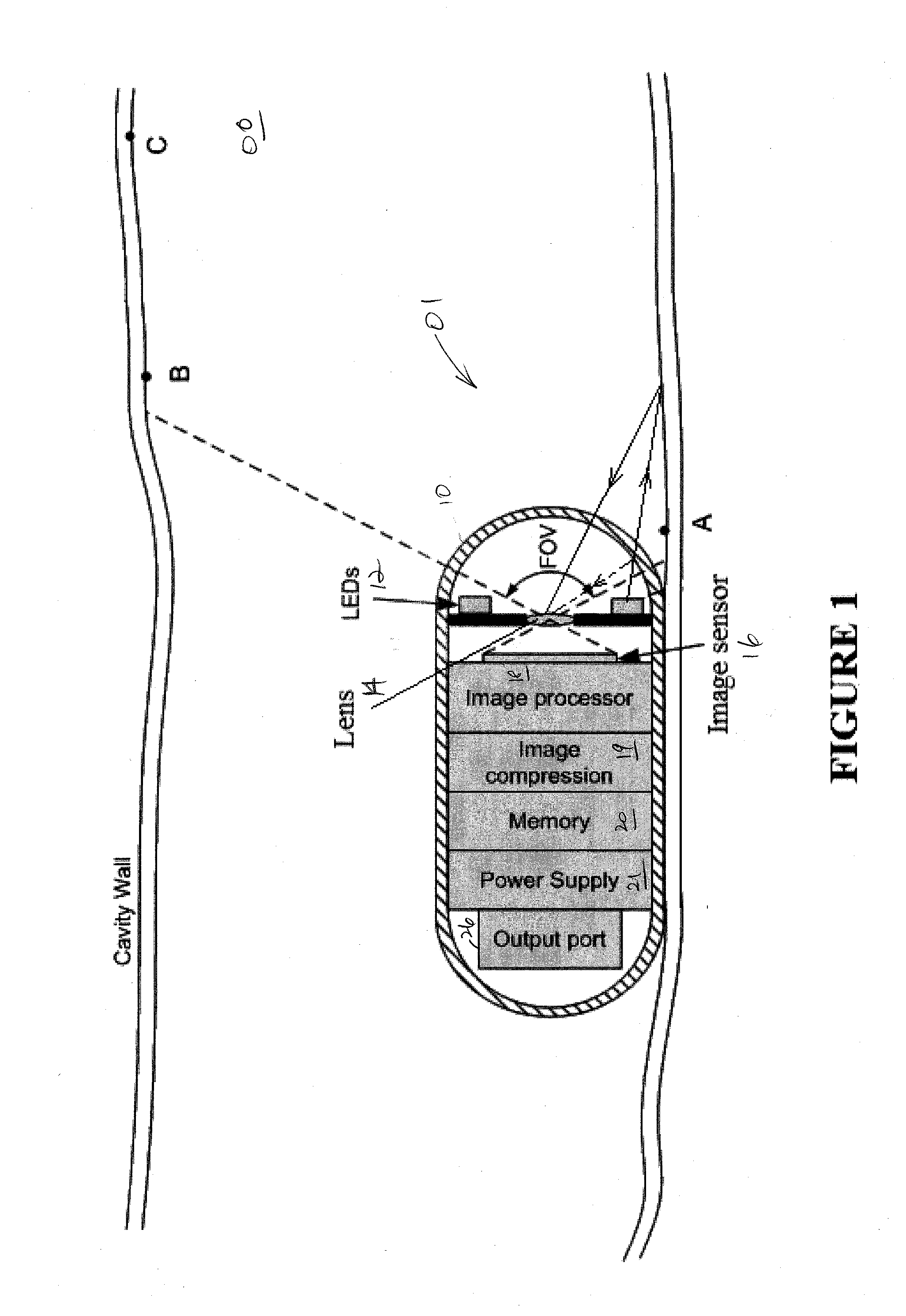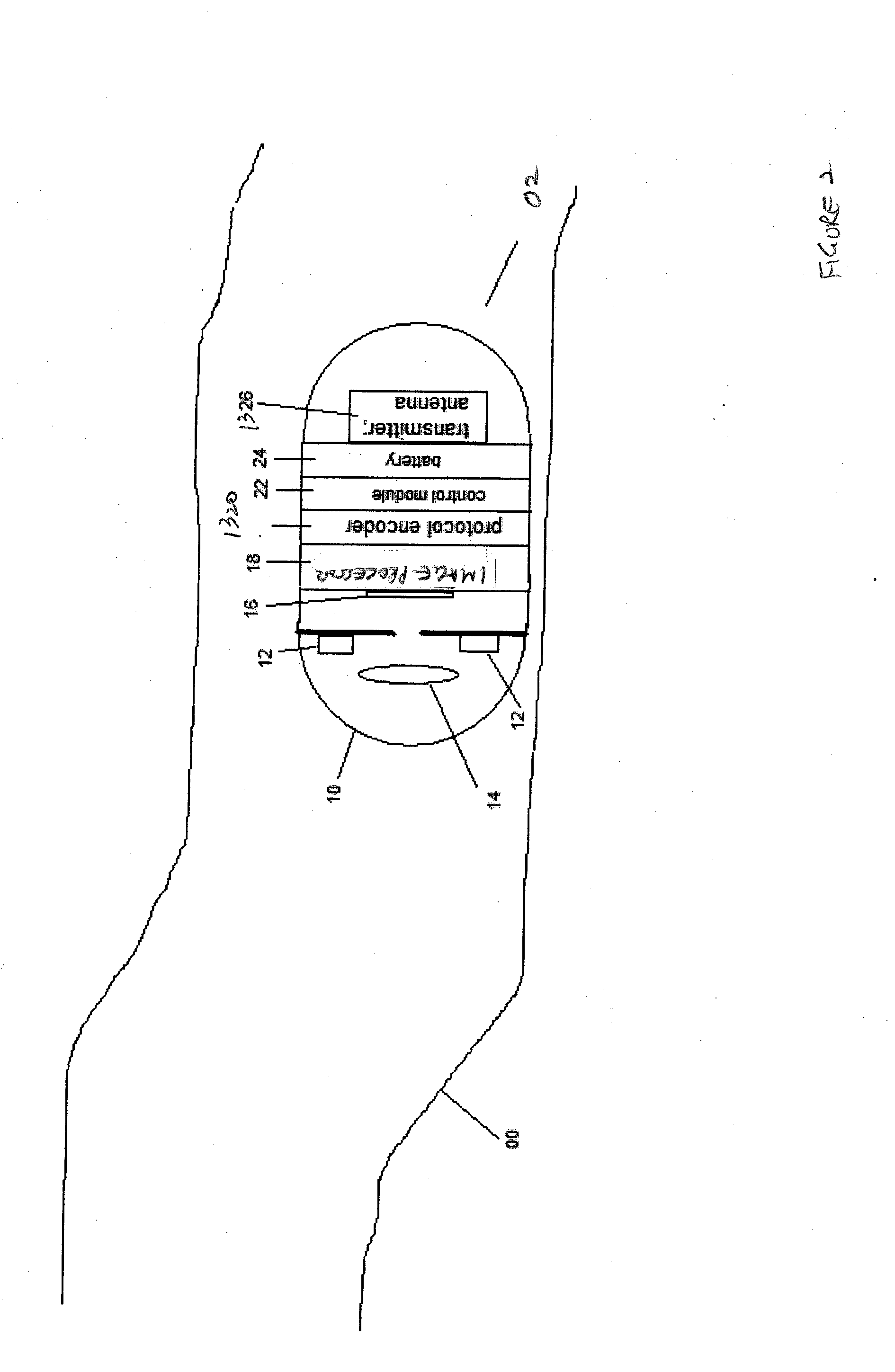Fcc-compliant, movement artifact-free image sensor array with reduced lighting requirement
- Summary
- Abstract
- Description
- Claims
- Application Information
AI Technical Summary
Benefits of technology
Problems solved by technology
Method used
Image
Examples
Embodiment Construction
[0037] The Copending Patent Applications disclose a capsule camera that overcomes many deficiencies of the prior art. The present invention provides a capsule camera that is optimized for its special operating environment.
[0038]FIG. 1 shows a swallowable capsule system 01 inside body lumen 00, in accordance with one embodiment of the present invention. Lumen 00 may be, for example, the colon, small intestines, the esophagus, or the stomach. Capsule system 01 is entirely autonomous while inside the body, with all of its elements encapsulated in a capsule housing 10 that provides a moisture barrier, protecting the internal components from bodily fluids. Capsule housing 10 is transparent, so as to allow light from the light-emitting diodes (LEDs) of illuminating system 12 to pass through the wall of capsule housing 10 to the lumen 00 walls, and to allow the scattered light from the lumen 00 walls to be collected and imaged within the capsule. Capsule housing 10 also protects lumen 00 ...
PUM
 Login to View More
Login to View More Abstract
Description
Claims
Application Information
 Login to View More
Login to View More - Generate Ideas
- Intellectual Property
- Life Sciences
- Materials
- Tech Scout
- Unparalleled Data Quality
- Higher Quality Content
- 60% Fewer Hallucinations
Browse by: Latest US Patents, China's latest patents, Technical Efficacy Thesaurus, Application Domain, Technology Topic, Popular Technical Reports.
© 2025 PatSnap. All rights reserved.Legal|Privacy policy|Modern Slavery Act Transparency Statement|Sitemap|About US| Contact US: help@patsnap.com



